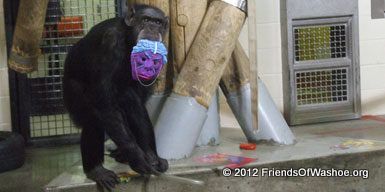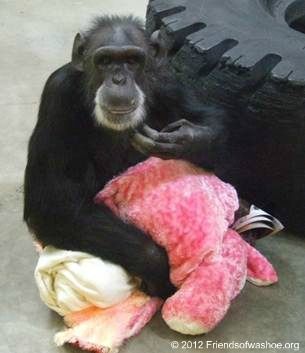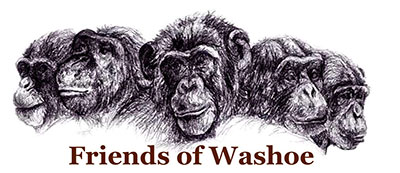
Chimpanzees in captivity (including those at CHCI) were not given a choice whether they wanted to live their lives in the confines of an enclosure. Humans made the decision to bring them into captivity for entertainment and scientific research. Compared to the life of their kin in their natural environment, chimpanzees in captivity live a very boring life. Chimpanzees are very social and intelligent; they have the ability to solve problems in their environment and have a complex social structure.
In their natural environment, chimpanzees can travel as many as 10 kilometers (approx. 7 miles) a day! Even in the nicest sanctuary, chimpanzees in captivity are not able to get sufficient exercise. Chimpanzees in their natural environment are also exposed to many different challenges and situations during the day and have to be able to solve problems in order to survive. Most chimpanzees who live in captivity are not exposed to situations that challenge them to utilize their critical thinking abilities.

Friends of Washoe believes that it is important to give the chimpanzees as much variety in their lives as possible. To do this, we use many forms of enrichment to provide them with opportunities for problem-solving, to give them things to sign about, and to help them stay healthy, both physically and mentally. These chimpanzees did not choose to live in captivity, and it is the responsibility of all the staff, volunteers, and student interns to enrich their lives and give them the highest possible quality of life.
At the CHCI sanctuary we had several different forms of enrichment: permanent, semi-permanent, object, social, food, thematic, and unintentional, which you can explore in more depth on the following pages. You can also read more about examples of enrichment at CHCI on Pan blogdytes (CHCI's archival blog). Tatu and Loulis, along with their chimpanzee family at Fauna Foundation, receive and enjoy much of the same enrichment at Fauna as they did at CHCI.

